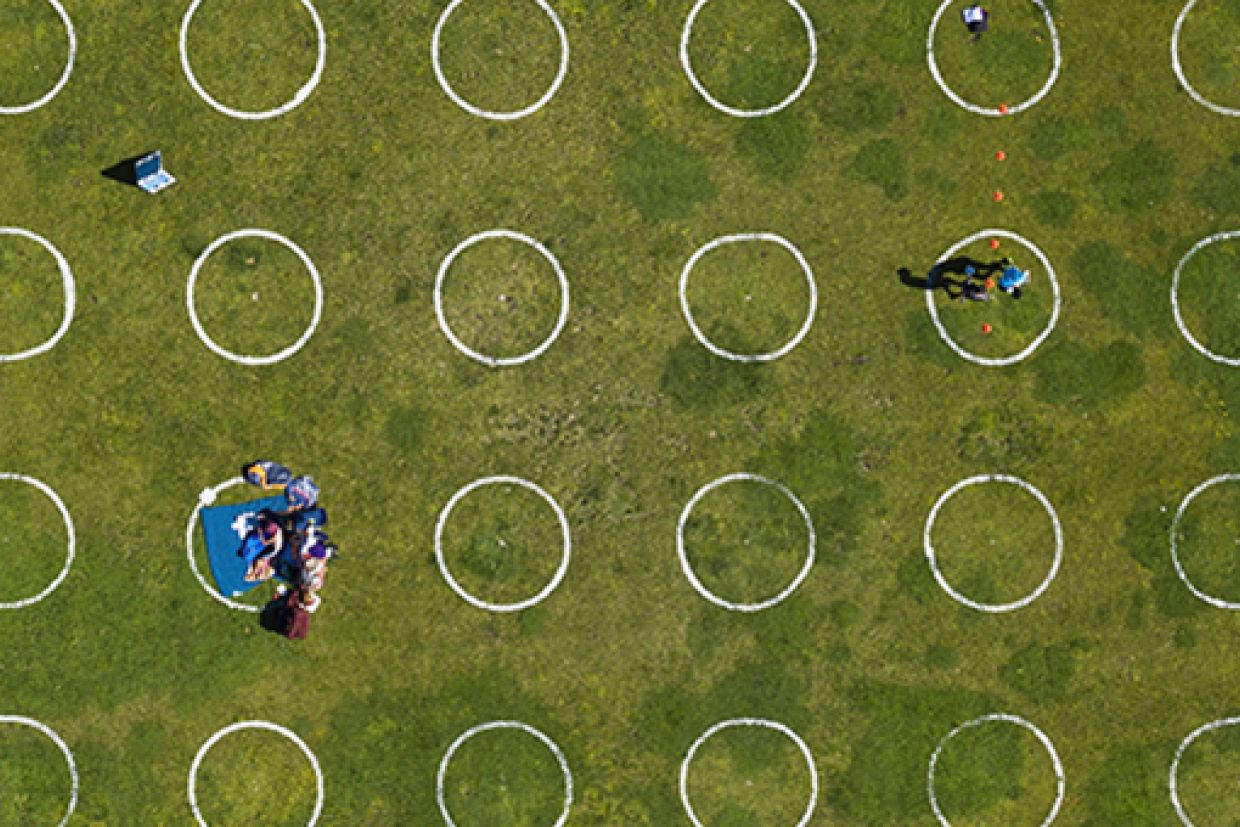As Canada slowly re-opens during the COVID-19 outbreak, urban planners and politicians are working to re-configure their cities to adjust to life with physical distancing and reduce the spread of the virus.
City officials drawing large circles in the grass in parks to space people out, closing street lanes to create a wider area for people to walk, and stores dedicating the first hour of shopping to people-at-risk are examples of society adjusting to the new reality of COVID-19.
Queen’s Geography and Planning Professor John Meligrana, MPL’91, has launched a study to discover the new policies and protocols that cities have successfully adopted. The research will be compiled in a report and shared with urban planners, politicians, and municipal leaders across Canada in the fall to help them re-open their towns as safely as possible.
While the world waits for a vaccine to be found in the next year or two, public health officials say physical distancing is one of the top weapons against COVID-19. Designing how thousands of people interact within neighbourhoods, buildings, and public spaces is what urban planners do, so Professor Meligrana hopes his report can play a role in saving lives during the pandemic.
“We are all praying for a vaccine,” says Professor Meligrana. “I am praying for all our first responders and praying for scientists to resolve this. But in the meantime, we need to rethink how we are using our cities. How do you achieve physical distancing in Canada’s most densely populated cities? That’s the question. That’s where we can contribute.”
The project is being funded by Rapid Response, a Queen’s project supporting research that contributes to the development, testing, and implementation of medical or social countermeasures to mitigate the rapid spread of COVID-19.
Professor Meligrana has hired two grad students (Claire Lee and Stephan Kukkonen) and is working with two fellow Department of Geography and Planning professors (Patricia Collins and Ajay Agarwal) to research and complete the report by the end of October.
They plan to look issues at related to public places (such as parks and sports fields), transportation, and vulnerable communities that have been impacted harder than affluent communities.
Professor Meligrana is already seeing emerging trends, such as a movement toward “quiet streets.” With fewer people driving, some cities are closing roads to create more room for pedestrians. It doesn’t always work. Kingston recently closed parts of two downtown streets, but re-opened them a few days later after a public outcry. These experiences can provide valuable lessons to city planners.
“We know there are a lot of these good ideas out there,” Professor Meligrana says. “We hope to catalogue them, package them, and share them with as many people as possible. Planners can play a big role in making communities safer.”


